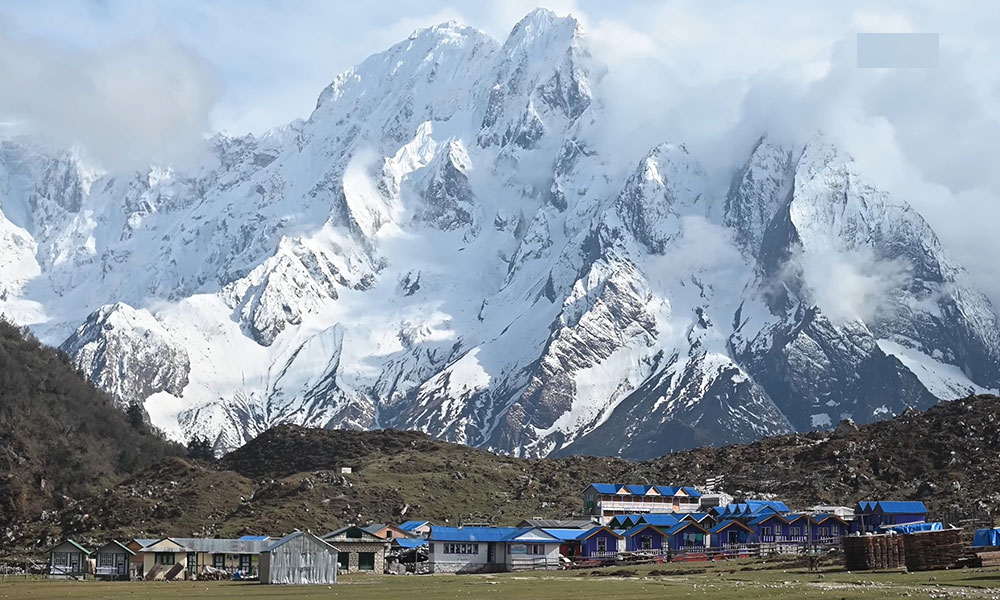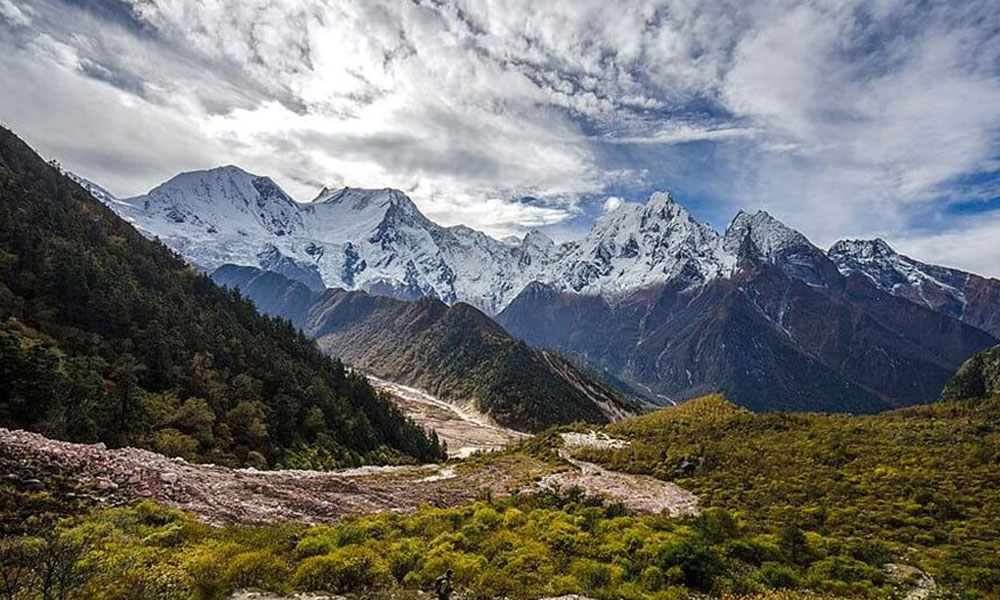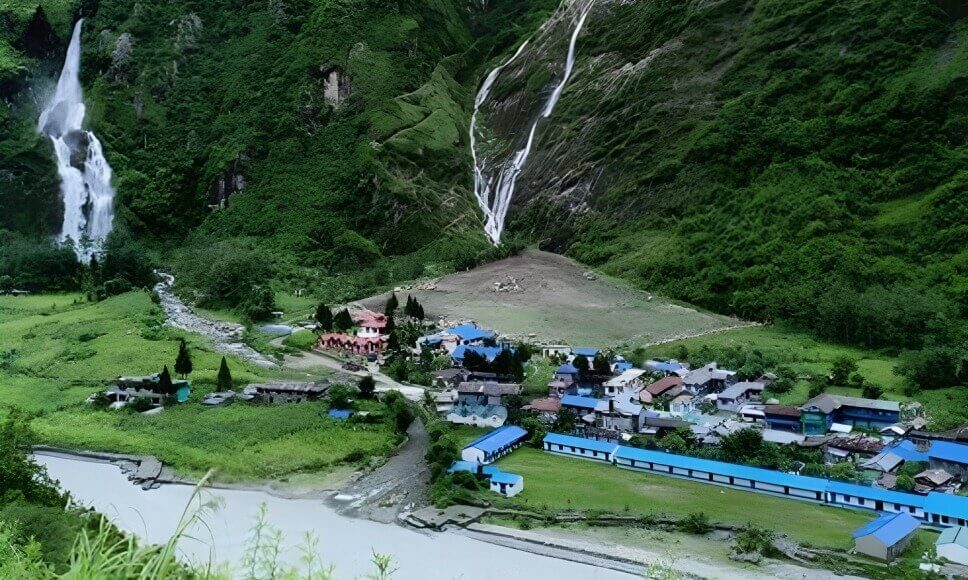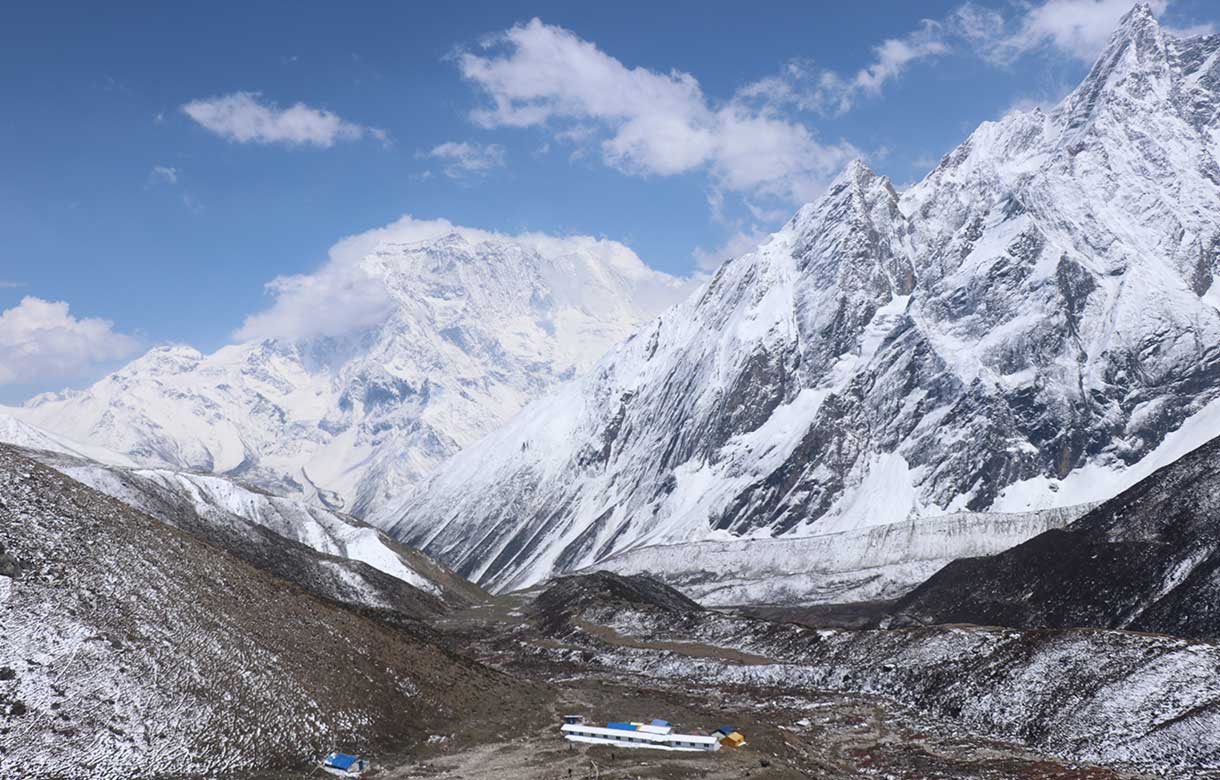
Nepal emerges largely from a common thought as a country with divine natures, rich cultures, and beautiful history. It’s considered the most familiar place to travelers, given the breathtakingly natural scenery, eye-catching marvels, and exquisiteness.
Trekkers worldwide enjoy visiting Nepal, given the unique and varied trek destinations it offers. It has walking trails of all difficulty levels, from moderate hikes to multi-day treks. But, even among these trek spots, some have a better reputation than others, and Manaslu is one of them.
It’s one of the most popular trek destinations in the west-central of Nepal and probably the less challenging. Trekking Manaslu Region is easier than visiting any other hiking spot in the Himalayas. It has a moderate walking trail with mixed terrains and a few ups and downs.
Unlike Manaslu, the trek doesn’t pass through crevasses or climb glacial moraines. Manaslu Round Trek takes you on an adventurous journey and introduces you to the local culture. As the trek starts from Soti Khola, it’ll offer a captivating view of turbulent rivers and streams.
As we slowly advance on our way to Larkye La Pass, the trail passes a series of old-fashioned villages and towns. We’ll walk through the alpine forests and ascend steep hills on this epic journey.
We’ll make us through Manaslu Conservation Area, a natural habitat for many wild animals and birds. Hence trekking the sanctuary will help us discover the unique wildlife in Manaslu. We’ll also cross the suspension bridge over Budhi Gandaki several times and even climb the mountain ridge on numerous occasions.
After Larkye La, we’ll descend the trail to Bimthang, passing through many remote settlements with their unique character and richness. The return trek is relatively easier than climbing the trails as it’s mostly downhill, but you mustn’t underrate. Trekkers have to be incredibly careful while descending the pathways.
After reaching Syange, we’ll return to Kathmandu via Prithvi Highway. The road trip to Kathmandu is almost 7 hours long but has a jaw-dropping view of sky-scraping mountains, towering hills, and lush meadows. You can also see a lot of remote villages and the beautiful Trishui River on the way.
You might be interested in the Manaslu circuit trek, Or Manaslu with Tsum Valley trek as well.
Highlights of Manaslu Round Trek
- Picturesque view of Manaslu, Annapurna, Ganesh Himal, and Langtang
- High cliffs, river valleys, and classic Nepalese villages
- Exposure to local culture, traditions, and values
- Dramatic landscapes, towering hills, and lush meadows
- Rich biodiversity with unique flora and fauna
- Discover the endangered wild species and birds like musk deer
When is the best time for Manaslu Round Trek?

Spring is the perfect time to go on a Manaslu Round Trek, as it offers mild weather with incredible views. Travelers will experience sunny days for the most part, with a little airiness and less humidity. Its temperatures are almost summer-like, especially after March, but a bit cooler and more relaxing.
The atmosphere is generally pleasant in Spring, although the early spring is cold. The weather after March is super hot, with temperatures rising to 15 Degrees Celsius. Its days are usually bright and sunny, making it easy to catch remote views.
Visitors in Spring will be able to watch and smell the scent of blooming rhododendrons and wildflowers. They can also walk the trail more easily and comfortably, given that the season doesn’t receive much rainfall.
If spring is fully occupied, look for Autumn to visit the Manaslu, as it has beautiful weather and milder temperatures. It’s warm and cool here during the season, specifically from late September.
The early season is normally hot, with temperatures ranging from 6 to 18 Degrees Celsius. But, as it draws closer to the end of November, the temperature falls dramatically. Visitors at higher elevations may even witness light snow showers and icy wind by the late Autumn.
Fall is a great time to walk Manaslu trails as it brings the splendid scenery of the surrounding green hills, verdant meadows, and terrace farms. Many hiking spots and parks like Manaslu Conservation Area allow you to cherish fall foliage.
Manaslu’s weather in summer and winter is slightly extreme and unpredictable. Hence travelers prefer to visit it less during the season than at any other time. Summers in Manaslu are hot and humid with high precipitation. Its daytime temperatures are super high, reaching up to 22 Degrees Celsius, but the temperature at night is low.
Thunderstorms and rain showers occur in June, making the trail slick and filthy. Trekking can be tough in Monsoon due to the ever-changing weather and climate. Travelers visiting Manaslu in winter will face similar trek difficulties given extreme weather conditions.
They’ll have to deal with the foggy weather and snowy trails, which makes hiking extremely hard. Winter months are cold and frigid, with temperatures dropping below -10 Degrees Celsius, so the visitors will have to brave the chilly weather.
Other Manaslu guide articles: Hiring a Manaslu Circuit Trek guide, Required permits, Packing for Manaslu trek
Manaslu Round Trek Itinerary:

Day 01: Arrival at Kathmandu
Our staff will stay current with your flight status and arrive at the airport on time. They’ll be at the arrival to pick you up and transfer you to the hotel. Get freshen up and rest until we meet you again in the evening for a brief trek review. Overnight stay in a hotel.
Day 02: Kathmandu Sightseeing
It’s true that Kathmandu is the most vibrant city in Nepal, historically and culturally. It has plenty of tourist attractions and famous landmarks with fantastic nightlife that can’t be despised.
So, while you’re still here in the town, we’ll visit some of these places, including Kathmandu Durbar Square and Boudhanath. We’ll explore Swyambhunath in the daytime and watch the mesmeric Kathmandu Valley.
In the evening, we’ll visit Pashupatinath and attend the evening prayer, even if it’s from far away. Kathmandu also has some beautiful shopping malls and department stores where you can buy gifts and souvenirs. Overnight stay in the hotel.
Day 03: Drive from Kathmandu to Soti Khola
Soti Khola Altitude: 700 meters
Driving Hours: 6 hrs
Overnight at: Soti Khola
The trip to Manaslu Round Trek begins with a long yet scenic drive to Soti Khola. Leaving the city behind, our commute drives along the Trishuli River and the remote settlements, providing an impressive vista.
The drive offers a splendid view of lush green farms and verdant meadows throughout the journey. After halfway through, we’ll leave Prithvi Highway and travel a dirt road leading to Soti Khola.
As the trail rolls up through the Budhi Gandaki River, the view of Himlung and its surrounding mountains becomes clearer and more visible. After almost 6 hours of a road trip, we’ll finally arrive at the beautiful village of Soti. From there, we’ll take you to a nearby teahouse, where you can rest.
Day 04: Trek from Soti Khola to Maccha Khola
Machha Khola Altitude: 900 meters
Walking Hours: 6-7 hrs
Overnight at: Teahouse
Trek from Soti starts with a gentle ascent and a downhill walk through the dense forests and a steep mountain ridge. Its trail leads us to a ridge above Budhi Gandaki River and then to Khursane, a remote village in the region.
After walking a rocky trail cleaved on the side of a cliff, we’ll descend past the paddy farms and around the village of Labubesi. From here, the trail rises just beside the rocky outcrop before traveling to an open valley next to the river.
After quickly descending to the river bank, the trail heads over a side ridge and down to the river, crossing the suspension bridge; we’ll walk a few more miles and finally end the trek at Maccha Khola. Overnight stay in the village.
Day 05: Trek from Machha Khola to Jagat

Jagat Altitude: 1804 meters
Walking Hours: 6-7 hrs
Overnight at: a
After breakfast, we’ll leave Machha Khola, following the gorge and up the river. The trail is narrow at the outset, but soon it rides a mixed terrain and crosses Tharko Khola to arrive at Khorlabesi. After a few more ups and downs, the trail will bring us to a natural hot spring in Tatopani, a popular spot for a break.
The journey from Tatopani is strenuous, with trails riding up a mountainous ridge and crossing a suspension bridge over Budhi Gandaki. After scrambling steep stone stairs, the trail descends to the river and ascends to Tharo Bharyang.
We’ll pass a series of beautiful Gurung villages and forests to Jagat. Once we cross Yaru Khola on a suspension bridge, the trail surmounts a ridge and ends at the village. Overnight stay in a teahouse.
Day 06: Trek to Deng
Deng Altitude: 2,630 meters
Walking Hours: 6-7 hrs
Overnight : Teahouse
Starting off in the early morning, we’ll work our way through subtropical forests and small streams alongside a few rural villages. The trek starts with an uphill walk over a rocky ridge and an easy descent to Sirdibas. The valley widens as the trail heads to the Ghatta Khola River, providing a spectacular view.
Continuing along the path, we’ll move upstream to a suspension bridge in Philim and head to the north of the village. The trek gets surprisingly easy from here, passing the millet fields to Ekle Bhatti.
Walking along the river's west bank and crossing over to the other side, we’ll once again return to the west side of the trail. After maneuvering the widened valley and into the bamboo forests to Deng Khola, we’ll reach the village of Deng.
Day 07: Trek from Deng to Ghap
Namrung Altitude: 2,630 meters
Walking Hours: 6-7 hrs
Overnight: Teahouse
Leaving the village behind, we’ll embark on one of today's most prominent journeys. The trek starts with a gentle descent and an uphill walk to Rana Bridge. After passing pine forests and crossing the bridge, we’ll arrive at Buihi Phedi. The trek from the village is imposing as it exposes us to local culture.
As Buddhism predominantly influences this section, we can see a lot of mani walls and stone statues. Walking further, we’ll reach Sereng River high off the Budhi Gandaki. After crossing the bridge for the last time of the day, the trail stops at Ghap. Overnight stay in a teahouse.
Day 08: Trek from Ghap to Lho
Lho Altitude: 3,550 meters
Walking Hours: 6-7 hrs
Overnight at: Teahouse
After having some typical Nepalese breakfast alongside scenic views, we’ll be ready for our next adventure. Starting with a walk through alpine forests full of rhododendron bamboo and oaks, we’ll climb the steep trail and walk along the streams till arriving at the village of Namrung.
Once again, going back on the trail, we’ll cross a suspension bridge and climb stone stairs that’ll take us to barley fields. Trekking through the village of Lihi and along Lidanda Glacier, the trail stops at Sho, a small Tibetan-styled village. Next, we head to Lho, a lovely village with ancient Buddhist monasteries, prayer flags, and mani wheels.
This village has many stupas, including Nyingma Rimjung Glacier and some rural settlements. After a hike of nearly 7 hours, the trail finally ends at Lho. Overnight stay in a teahouse.
Day 09: Rest day in Samagaon

Since the trek on the previous day was tough and demanding, it’s better we stop at the village and get some rest. After breakfast, we’ll stroll through the village and enjoy some hospitality.
During the day, we’ll hike up the valley from the back end of Samdo to the trade pass approaching Tibet. Since the trail is uphill, it’ll help us acclimatize and provide us with a mesmerizing view of Simrang, Himalchuli, Cheo, Kang Guru, and Larkye Peak.
We’ll encounter seasonal herding settlements and beautiful mountains on the way to the viewpoint. Upon reaching the hilltop, we’ll get a crystal clear view of shimmering glaciers and rocky hills.
On the second option, we have Gya La Pass in Samdo. It’s the ideal and perfect adventure hike for acclimatization. Also used as a trade route to Tibet in the old days, Gya La Pass is a more challenging trek than any other hike in the region.
Its trails are relatively steep and rugged, making the trek more difficult. But, once you have arrived at the hilltop, it will provide us with a breathtaking view of Himalchuli, Ngadi, and Simrang. Once the sightseeing is done, we’ll return to the village of Samagaon to spend the night.
Day 10: Trek from Samagaon to Samdo
Samdo Altitude: 3,875 meters
Walking Hours: 4 hours
Overnight: Teahouse
Today’s trek is short, requiring just about four hours of walking. The expedition begins with a short descent to Budhi Gandaki River and over a side stream on a bridge. After the valley has widened, the trails run beside several mani walls and on a shelf over the river.
Walking through the juniper and birch forests in Kermo Kharka, we’ll climb down the trail and cross the bridge. From there, the trail gets steeper onto the capes between two river forks. After a final ascent on stone arches, we’ll arrive at the charming village of Samdo.
Day 11: Trek from Samdo to Dharamsala
Dharamsala Altitude: 4,460 meters
Waking Hours: 4-5 hrs
Overnight: Teahouse
After breakfast, we’ll hit the trail again and lead to Dharamsala. Passing the Tibetan market popular as Larke Bazaar, we’ll swiftly descend to Budhi Gandaki River and cross the wooden bridge.
The trail rises high down the other side, crossing streams beside the Larkya Glacier. It then travels around the Salka Khola valley and mounts to Dharamsala called Larke Phedi. Waking on this trek section will give us a stunning view of snowcapped mountains and traditional monasteries.
Day 12: Trek from Dharamsala to Bimthang via Larkya La Pass
Larkya La Pass Altitude: 5,160 meters
Bimthang Altitude: 3590 meters
Walking Hours: 7-9 hrs
Overnight at: Teahouse
We’ll start our day with a warm breakfast in Dharmasala and then proceed to the trail heading off Bimthang. Beginning the trek with a short climb, we’ll get to the valley north of Larkya Glacier, which offers a magnificent view of Cho Danda and Larkya Peak.
After passing over the glacial moraines, we’ll ascend the trail, which gradually becomes steeper and narrows to the end of the pass. The courses in this part of the Manaslu region are incredibly challenging, with high cliffs and mountainous terrains.
But as we reach the top, the trek rewards us with an incredible view of Himlung Himal, Cheo Himal, and Annapurna II. Finally, we’ll finish off the hike with a gentle walk through the pastures. Overnight stay at a teahouse.
Day 13: Trek from Bimthang to Tilije
Tilije Altitude: 2,300 meters
Walking Hours: 5-6 hrs
Overnight: Lodge
Out of Bimthang, the trail makes a short ascent up the ridge and traverses a stone-paved course. The path stretches to the Dudh Khola River, crossing which we trek uphill through the stupa shape arch and pass the mani wall.
After passing the checkpoint at Thonje, we’ll head towards Dharapani and, just afterward, take the main trail to Annapurna Conservation Area. Next, we cross the bridge over the Marsyangdhi River and pass some mani walls on the way to the village of Tal.
It’s a small village nestled at the base of a cascading waterfall. Tal is one the most commercialized places in the region, with many local teahouses and hotels providing accommodation to trekkers.
Day 14: Trek from Tal to Syange

Syange Altitude: 3,543 meters
Walking Hours: 6-7 hrs
Overnight at: Teahouse
After having breakfast in Tal, it’s time for us to set off on our next journey to Syange. We’ll walk mixed terrain until Chyamje and then cross the Marsyangdi Khola on a suspension bridge. After trekking through the valley and beautiful terrace farms, the trail drops and comes across the rhododendron and pine forests. We’ll also see many villages clung on the hillsides during the journey to Syange. Overnight stay in a teahouse in the village.
Day 15: Drive from Syange to Kathmandu
Early in the morning, we’ll leave Syange and drive our way back to Kathmandu. But, before bidding farewell to the village, we’ll enjoy our last breakfast and the magnificent scenery. After some time, we’ll ride the Prithvi Highway and return to the city.
The journey is long, taking almost 6 to 7 hours to reach. Along the course, we’ll enjoy some breathtaking scenery with towering mountains and sweeping hills. After arriving at the valley, you’ll be transferred to your hotel. You can then freshen up, have dinner, and get some sleep.
Day 16: Final Departure
The official representative of Eco Holidays Nepal will drive you to the airport on the last day of the trek.
See also:
 Difficulties of Manaslu Round Trek
Difficulties of Manaslu Round Trek

The trek difficulties of Manaslu’s Round Trek depend mostly on the altitude and climate. Trekking at a higher altitude is generally more challenging and tough than walking at lower elevations due to low atmospheric pressure and oxygen.
The instant exposure to high mountains can cause trekkers altitude sickness. Those new to the weather conditions and topography will likely suffer more due to low oxygen. Climbing its trails in winter makes the trek much harder and increases the risk of blisters.
While it’s not the hardest walk ever, climbing Manaslu isn’t as easy as it seems. The hike is demanding, with few exceptions. Trekkers have to ascend steep slopes and walk rugged terrain, which is physically challenging.
It also takes them through some of the remotest areas, causing physical exertion. Trekkers will have to spend hours and hours walking the mountainous terrains with a backpack. Therefore, it requires excellent physical fitness and mental strength to climb Manaslu.

